When I learned last December about a marine mammal photography tour off the coast of Vancouver Island, I immediately signed up – marine mammals are my passion.
I had purchased a Nikon D500 earlier that year but needed to find a lens that would allow me to capture wildlife of all shapes, sizes, and speeds, at a distance as well as up close. My research led me to purchase the recently released Tamron 100-400mm f/4.5-6.3 Di VC USD because of its light weight, solid reviews, and zoom range (it had to be my ‘one lens fits all’ because I had no intention of changing lenses in a zodiac amid waves and spray). As it turned out, the lens met my needs perfectly.
Our group of seven, including our photographer/guide and two crew members, set sail from Port McNeill on the north coast of Vancouver Island. Our home base for the eight-day adventure was a 71-foot ketch. We would be exploring Johnstone Strait, the Broughton Archipelago, and Queen Charlotte Strait to Queen Charlotte Sound, with each area providing unique wildlife viewing experiences.
Johnstone Strait is a narrow, 100 km-long channels between Vancouver Island and the Coast Mountains of mainland B.C. In the summer, it is home to over 150 orcas that comprise the Northern Resident pods. The narrowness of the channel is the perfect setting to get a close look at the orcas as they hunt for salmon.
The Broughton Archipelago is a protected marine park that consists of hundreds of small islands separated by narrow channels. Bald eagles frequented the trees along the shore, while Rhinoceros Auklets dove and surfaced with freshly caught sardines. The auklets have barbs in their bills that allow them to hold one fish while diving in pursuit of another.
As we continued up Queen Charlotte Strait toward the Sound, we encountered several ‘bait balls’. When small schooling fish, such as sardines, are threatened by auklets, cormorants, and other plunge-diving predators, they swim in a tightly packed, spherical formation for protection. As the predators drive the bait ball closer to the surface, seagulls and other less-competent feeders fight over the sardines. Humpbacks and other baleen whales are attracted to bait balls because they can lunge-feed by swimming up through the bait ball with their mouths open, engulfing many fish at one time.
As we neared the Sound, our sightings of Humpbacks became more frequent, and each time we patiently waited to capture a breach or the characteristic ‘tail flail’ they exhibit prior to a deep dive.
We travelled by zodiac to secluded islands that our captain knew were inhabited either by Steller sea lions or Harbour seals; daily tour operators cannot travel to such remote locations, so the sea lions were quite curious when we approached.
Quieter bays were inhabited by herons, seals, sea otters and, of course, more eagles. The seals were curious as well, but more skittish than the sea lions.
En route back to Port McNeill, we visited the Browning Wall, an environmentally protected area where abundant sea life clings to a steep rock face in clear aquamarine water. At low tide, so many of the species were near or above the surface of the water. The dramatic colours of the sea stars, anemones, and Egg-yolk jellyfish were particularly photogenic.
Being able to visit the Queen Charlotte Strait and observe an ecosystem with such diversity of species is an opportunity I would highly recommend to any photographer.
I can’t wait to return.
Author : Heather Matthew
Heather is an avid adventurer photographer. Heather’s next trip is to explore photography in New Zealand.



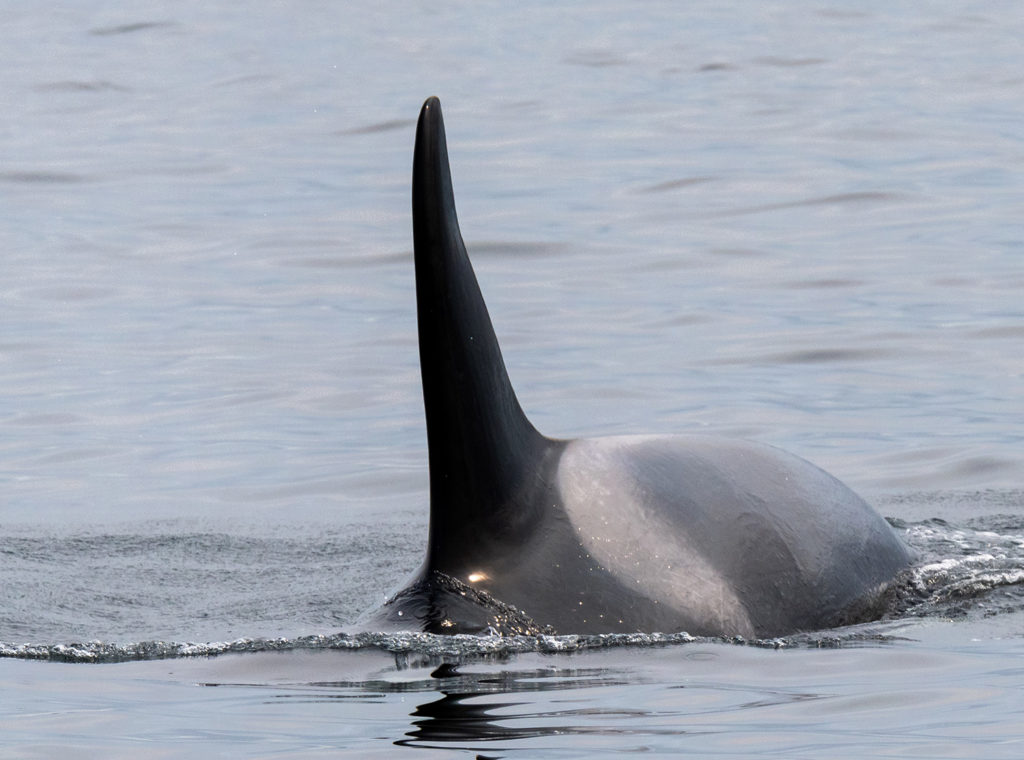
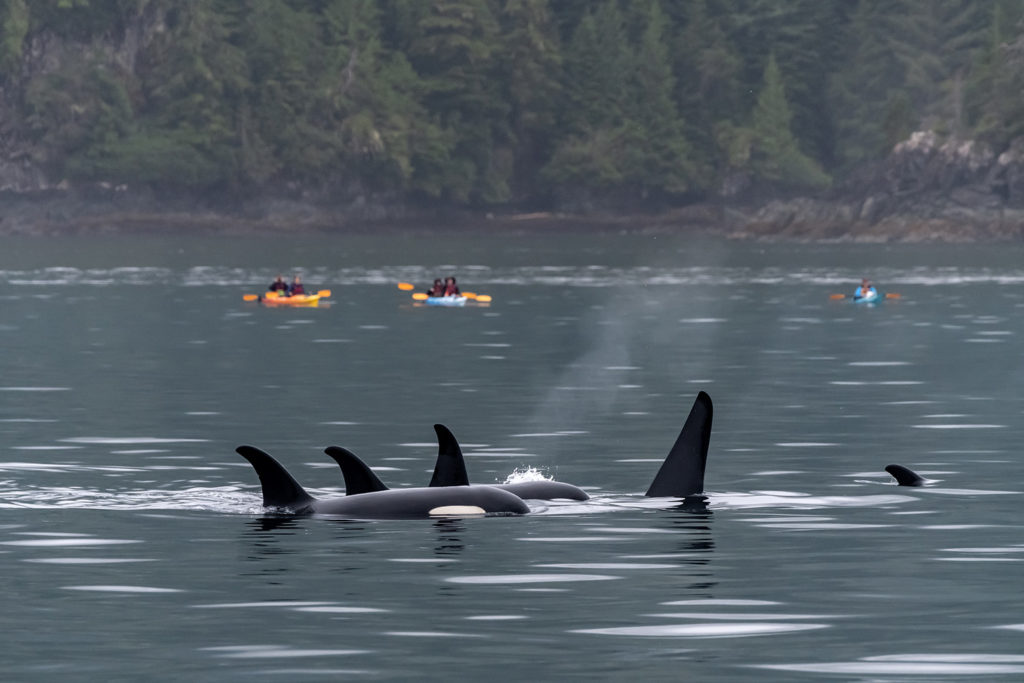
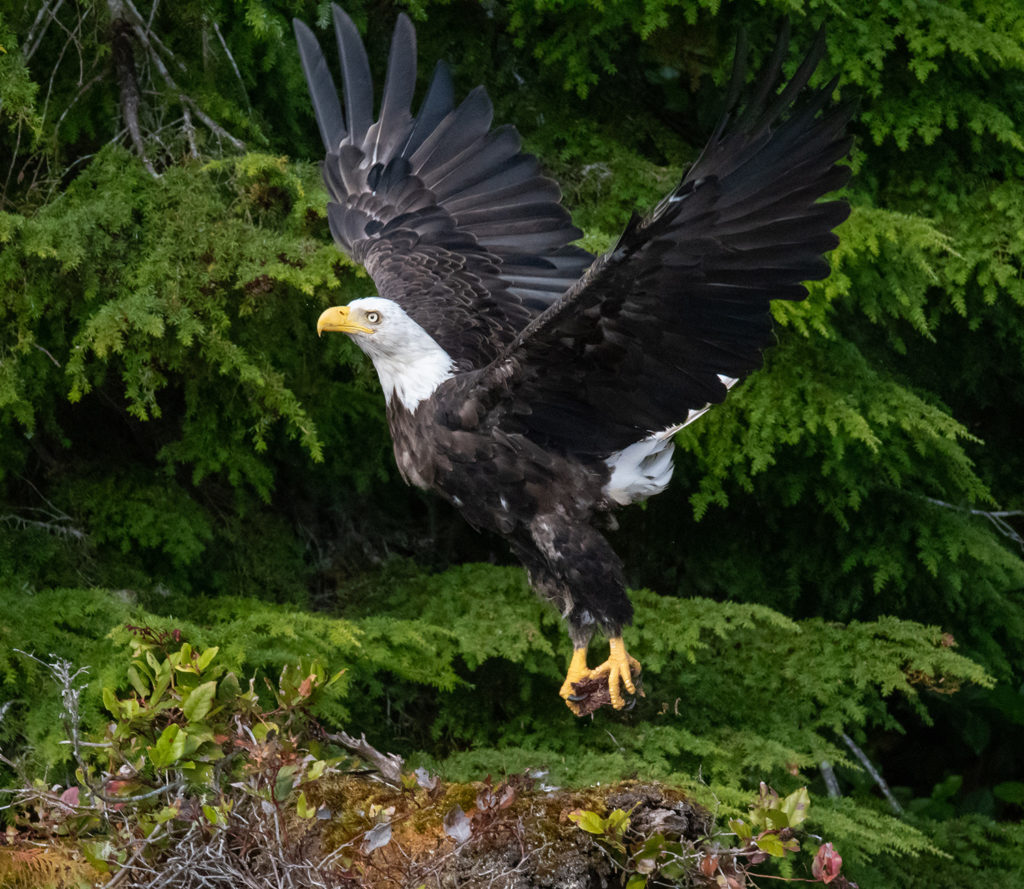
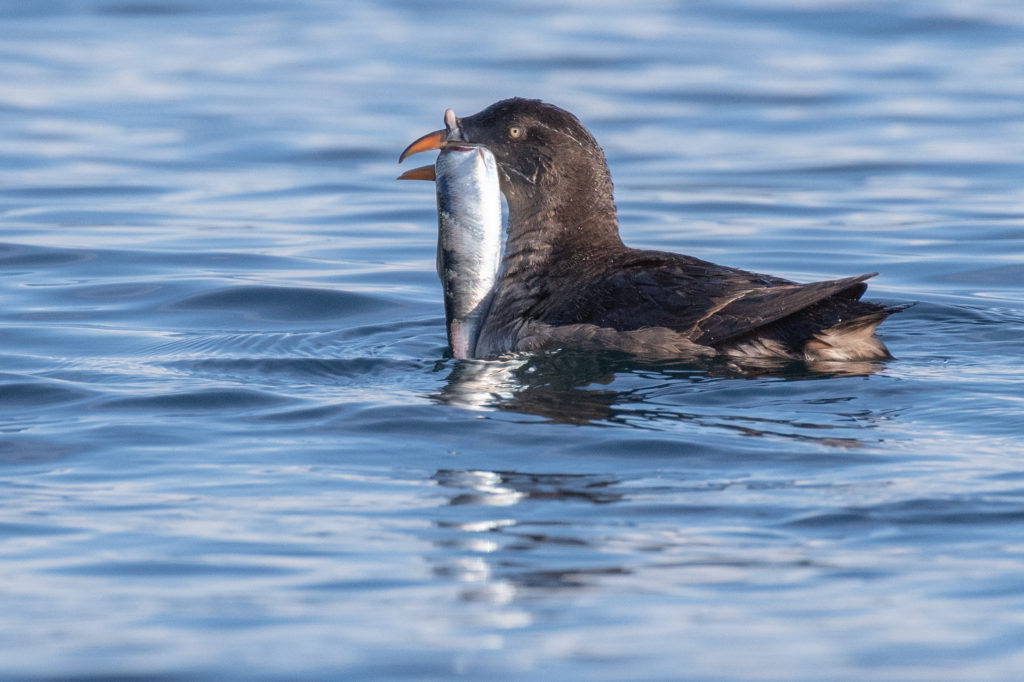

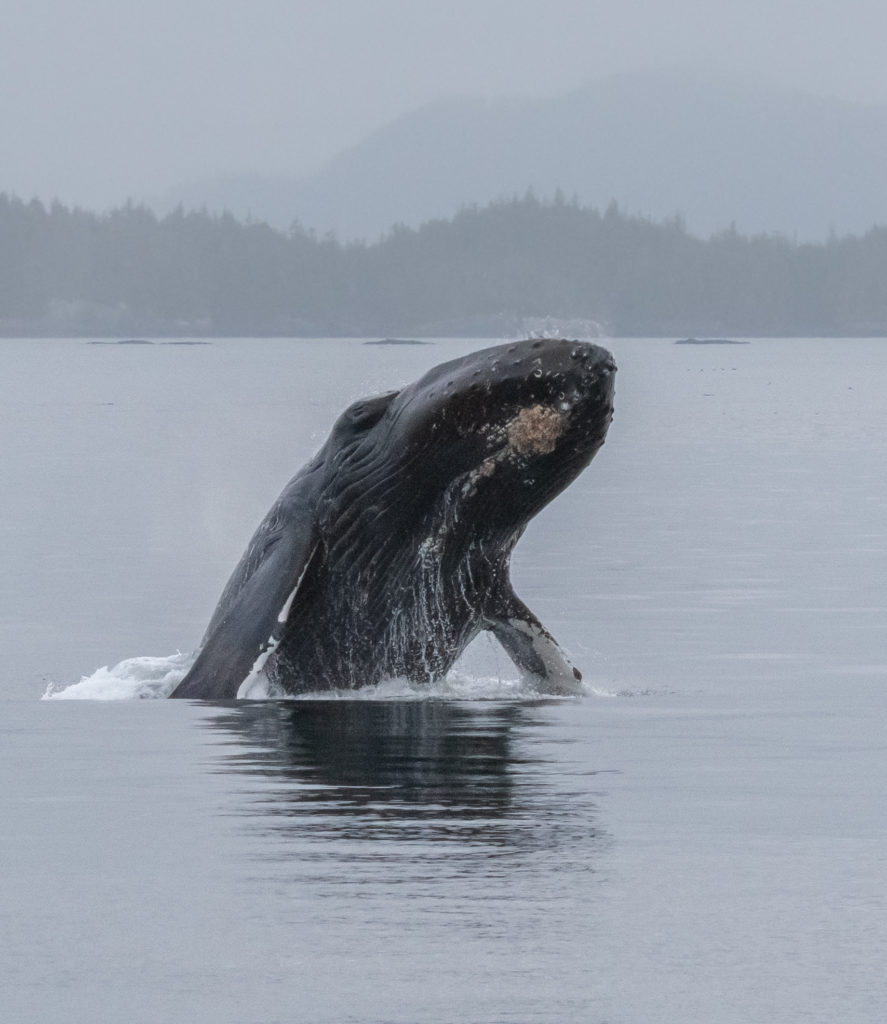
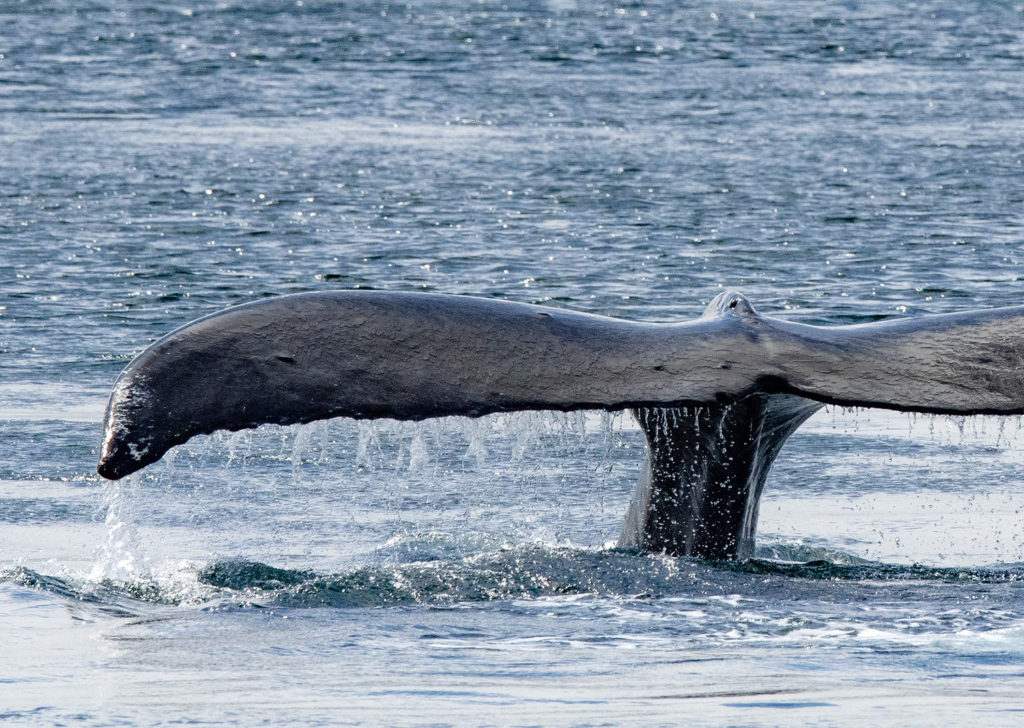
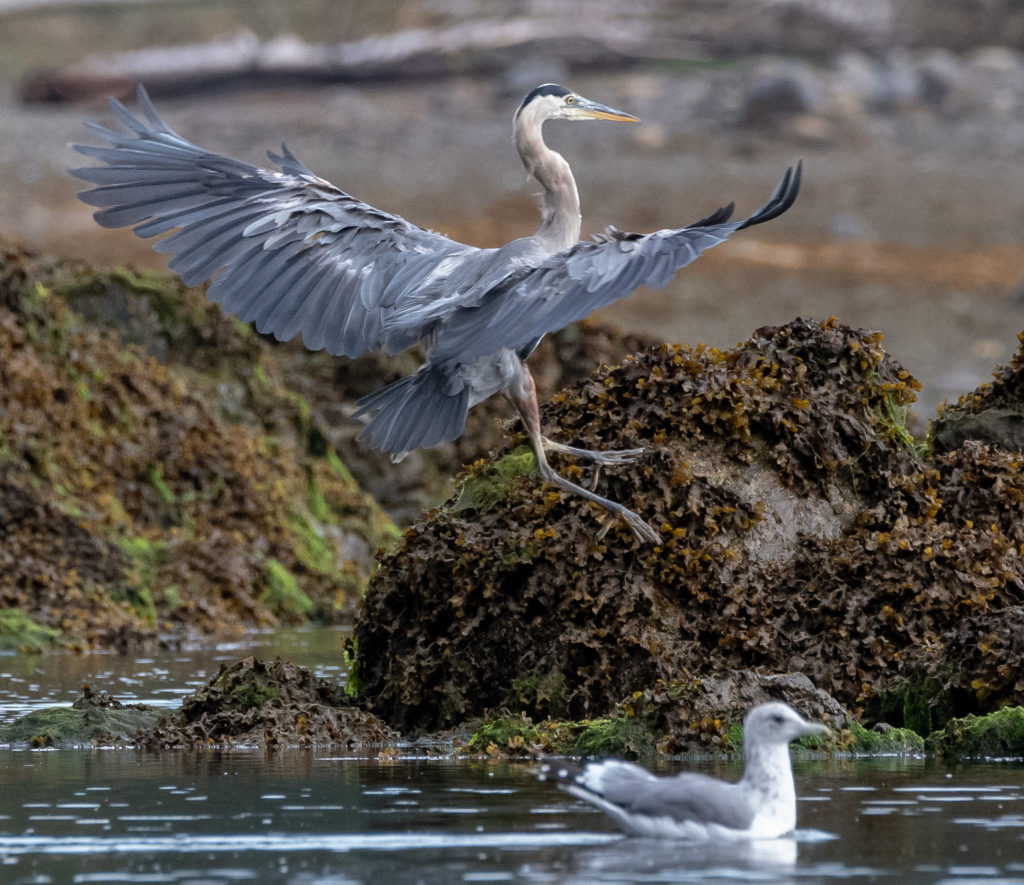
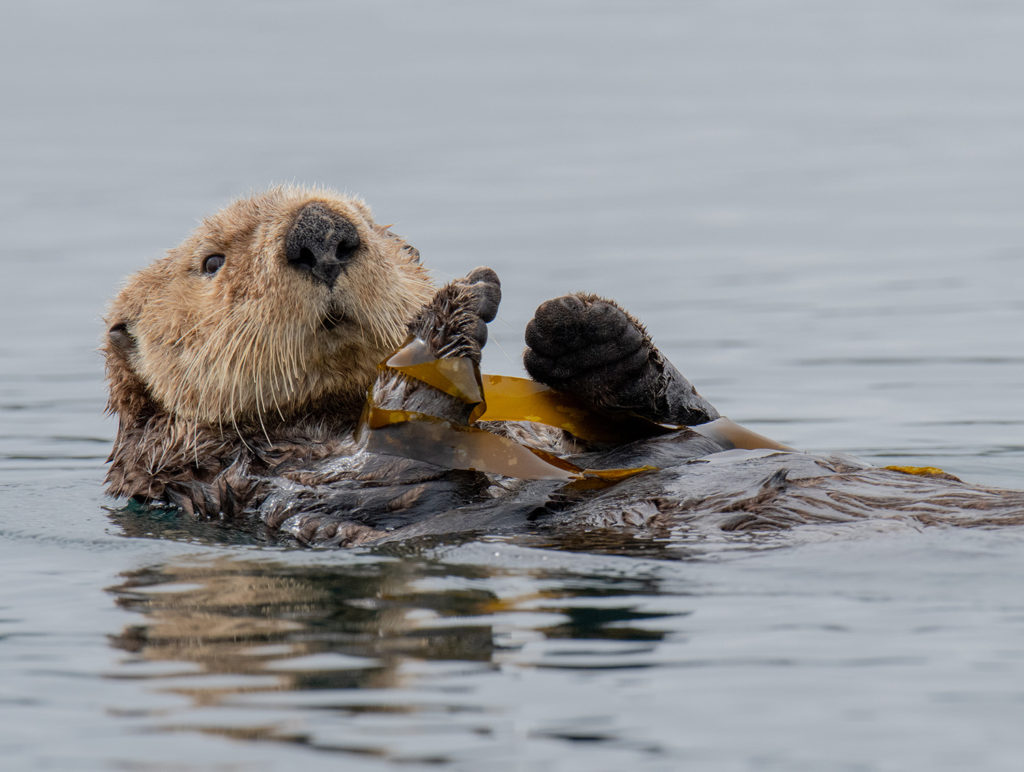

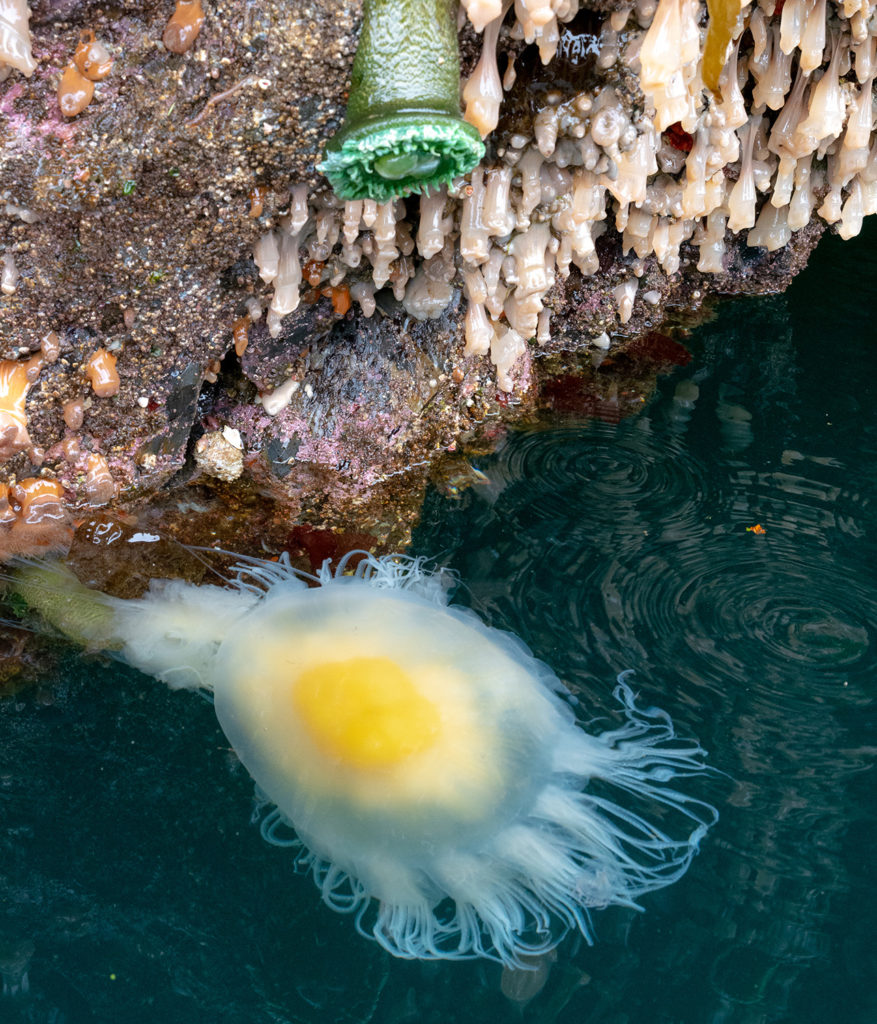
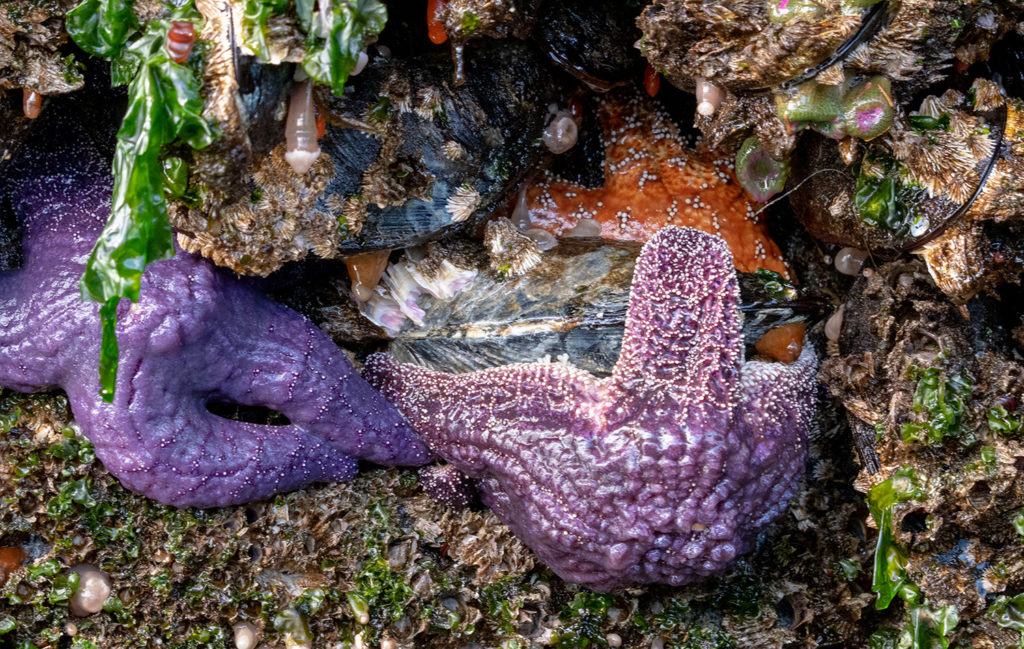




Great shots! What tour company did you use?
Thanks
Henry
Winnipeg
Thanks Henry!
Our ship was the Ocean Light II, out of Port McNeill, and the tour was arranged through John E. Marriott.
It was a great experience.
– Heather